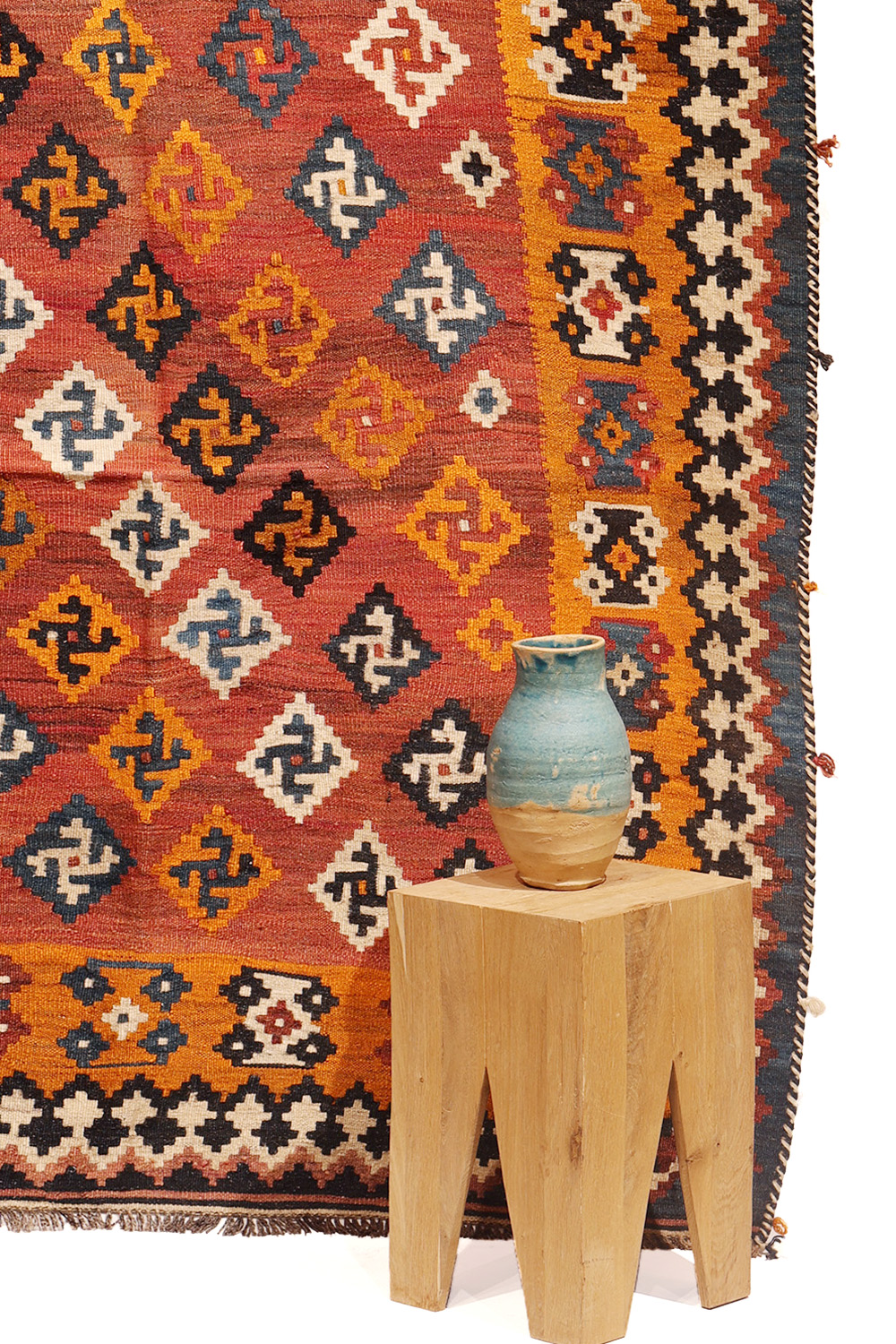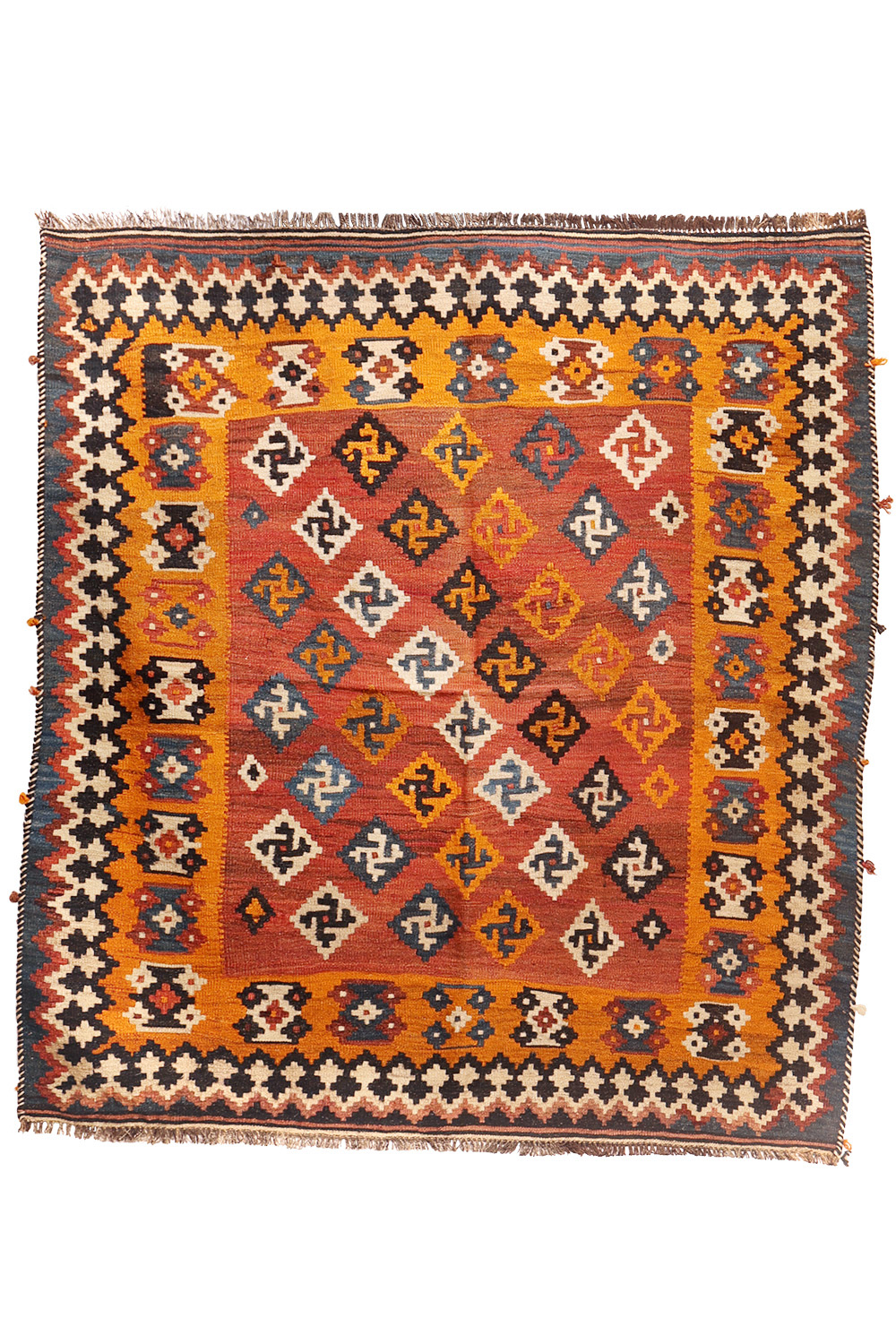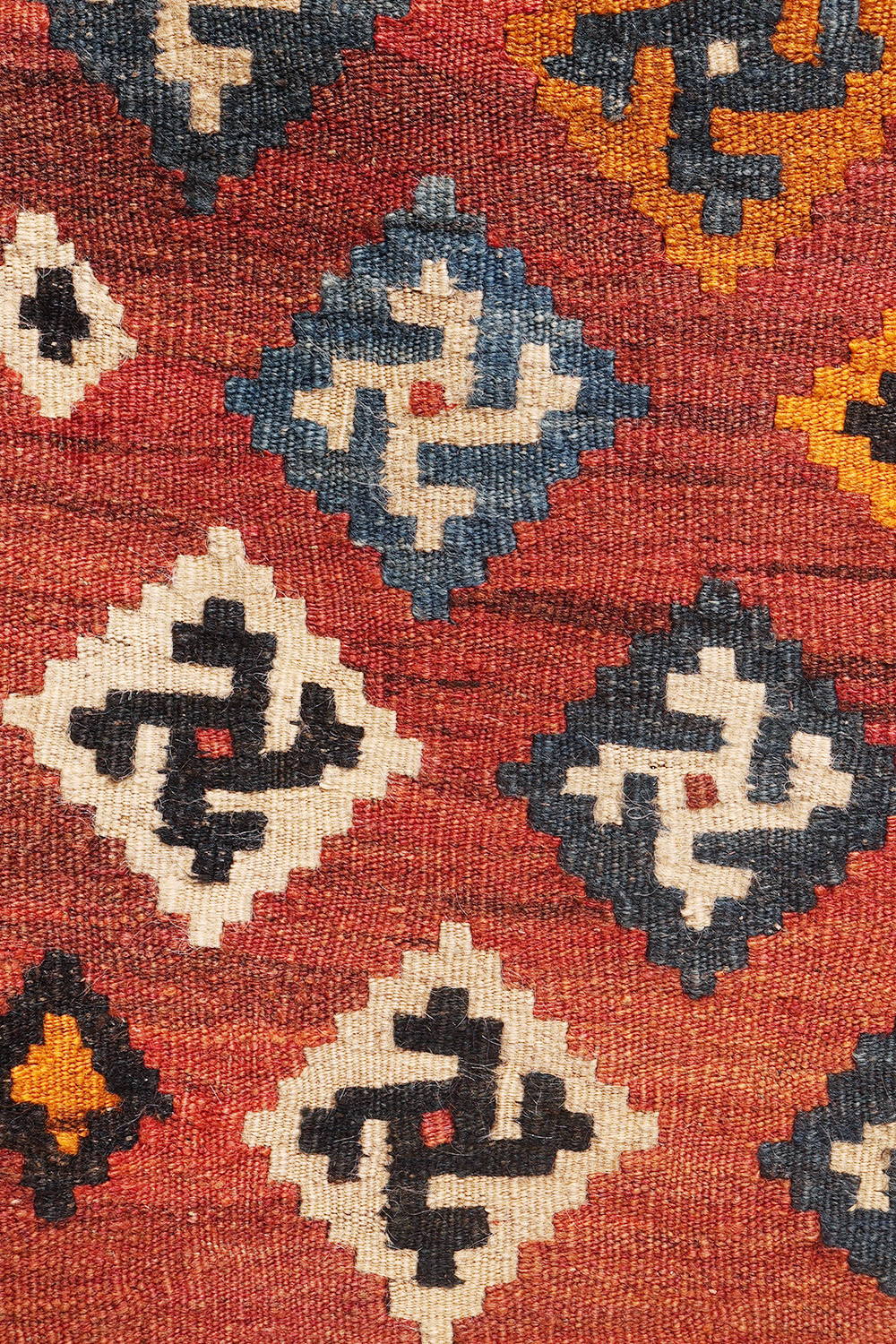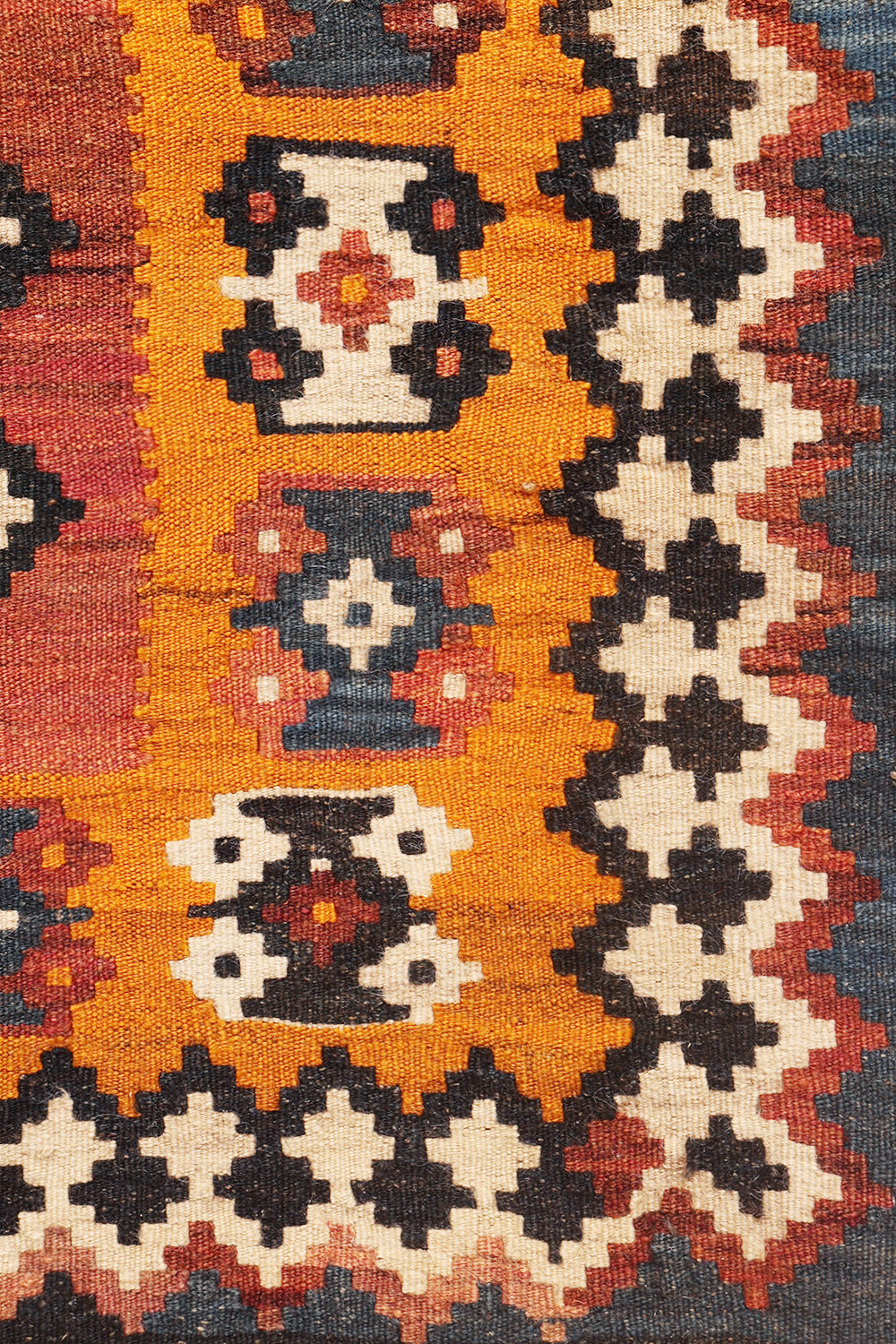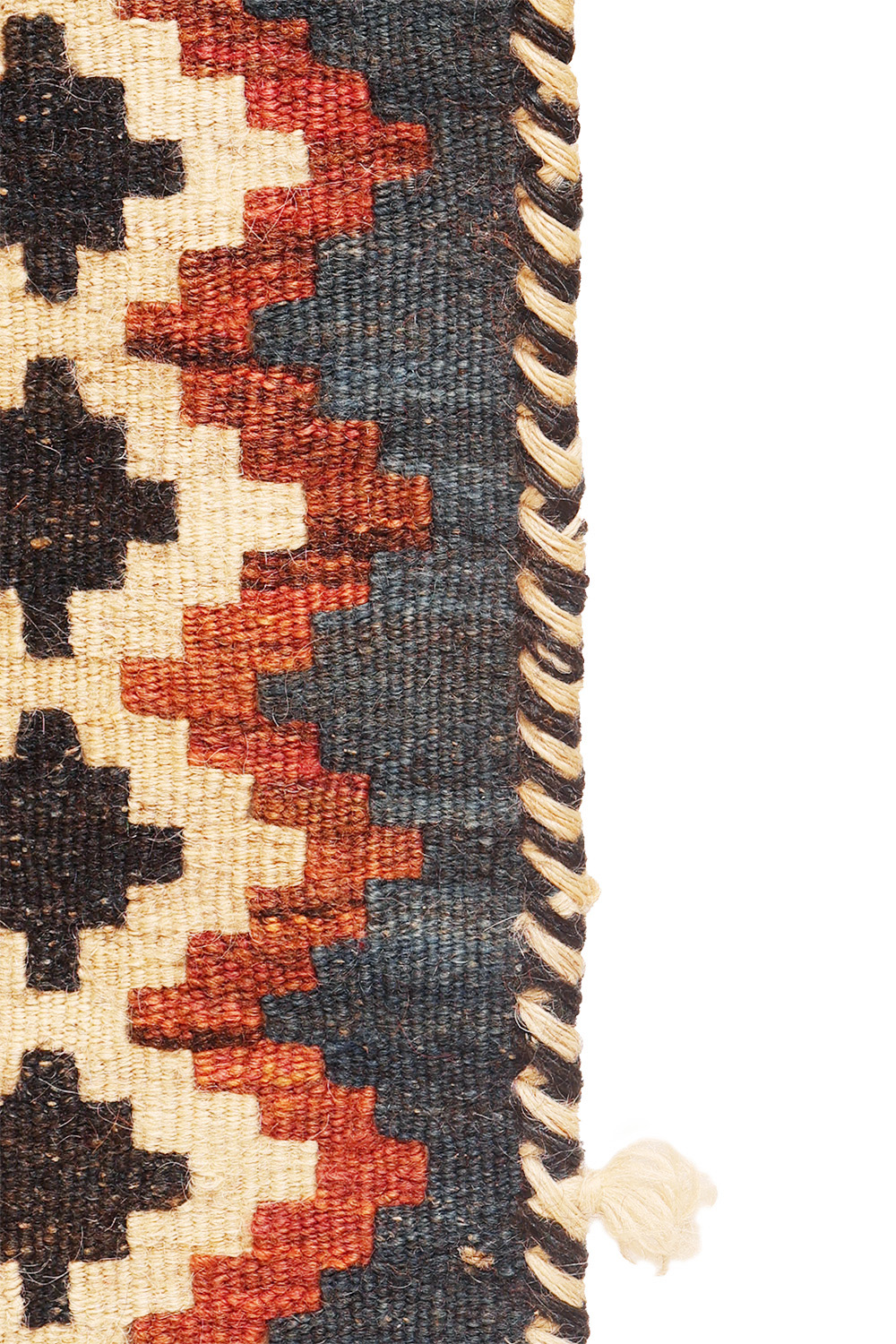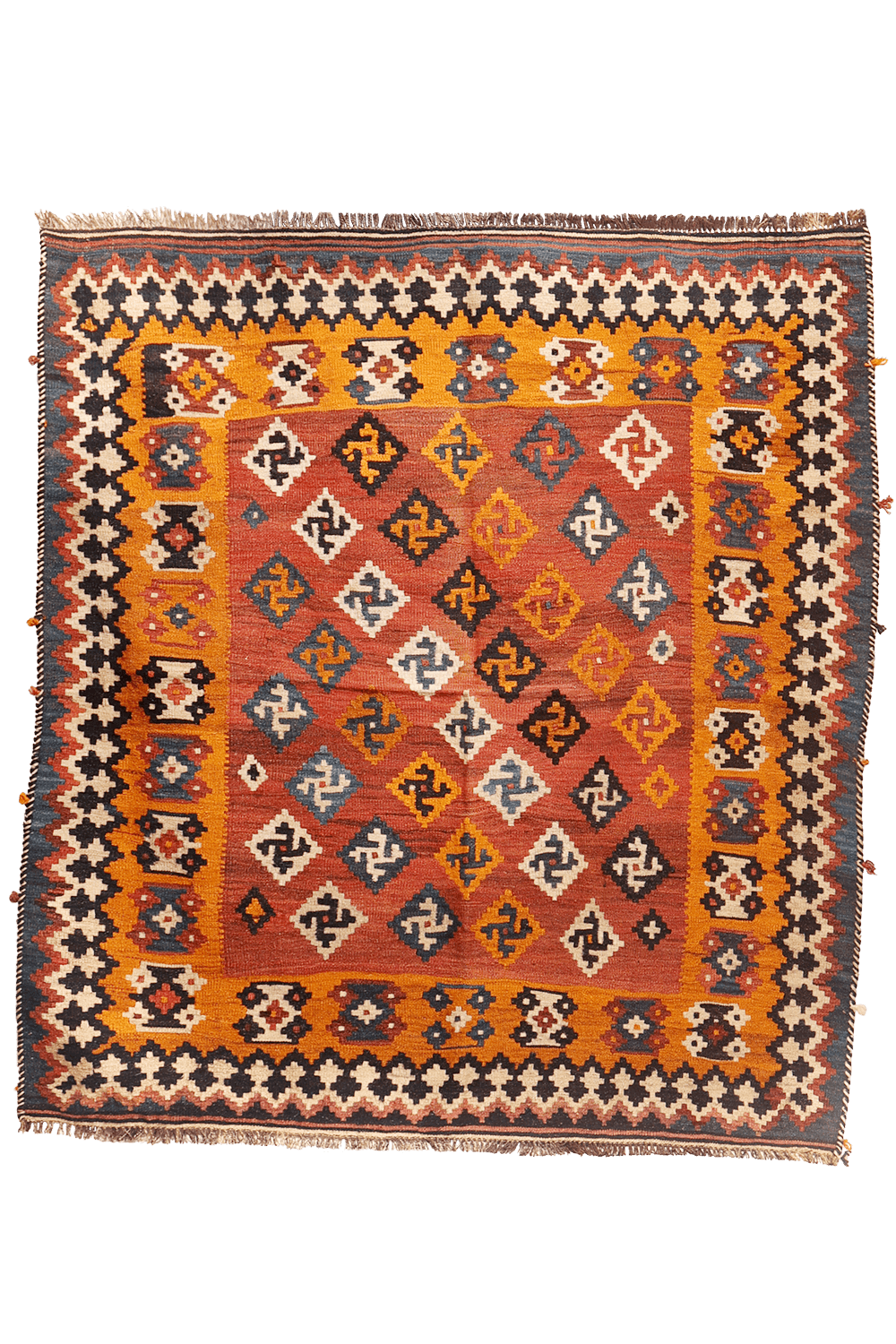750.00 €
Rare Square Semi-Antique Qashqai Kilim – Geometric Design with Natural Dyes
This distinctive square Qashqai kilim from Iran is a semi-antique piece with a unique and eye-catching design. The main field features a series of diagonally arranged lozenges, each containing an ancient swastika motif—a traditional symbol often used historically across cultures with different meanings (see below).
Crafted using all-natural dyes, the kilim displays beautiful abrash (subtle variations in color), adding depth and character to the piece. Thick and durable, it’s well-suited for high-traffic areas in the home. The warp threads, visible in the fringes, are made from strong goat hair, contributing to its lasting structure and resilience.
Material: 100% hand-spun sheep wool
Size: 170×156 cms
Origin: Qashqai tribe, Iran
Date of weaving: 1950s
A Universal Symbol
If we study this motif on ancient objects—such as the Phrygian furniture discovered in the tomb of King Midas at Gordion, near the small town of Polatlı (Ankara province)—we find that it is part of a more complex symbol of which it is a simplified form: the swastika, a cosmic sign symbolizing the perpetual motion of rotation around a fixed point. Among weaving cultures, its symbolism would be akin to that of the cross—an intersection representing the center of the world, or axis mundi, through which the shaman accesses the various spheres of the cosmos to invoke the protection of the spirits that dwell within them.
The swastika appears in many cultures across Asia, Africa, and Oceania, which challenges the idea of its purely Indo-European origin—though it is also present in the European imagination and in Hinduism, where it is associated with the activity of the god Brahmā and symbolizes either creation or destruction, depending on whether its arms point to the right or to the left (in the latter case, it is called sauvastika).
In other parts of the world, this motif can carry completely different meanings. Two examples: in Chinese Buddhism, it represents the attainment of the ten thousand merits required to reach nirvana; and among some Native American tribes, it symbolizes the migration of clans.
Back to our thread.
Among weaving peoples, the swastika—or the hook that stylizes it—is thought to be a protective symbol of shamanic origin, much like the cross or the tree of life. The use of the conditional is important here, as there is a second hypothesis suggesting that the hook represents the curved line separating Yin from Yang; in that case, this motif would symbolize the duality that gives rise to life—fertility, rather than protection. In the absence of certainty and without definitive explanations from contemporary weavers, we refrain from settling on one hypothesis over the other: some symbols retain an element of mystery.
From “Symbolique des kilims” by Ahmet Diler
1 in stock
Additional information
| Weight | 5 kg |
|---|
Subscribe and receive the lastest news
